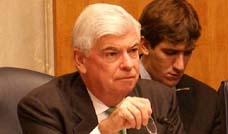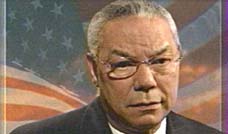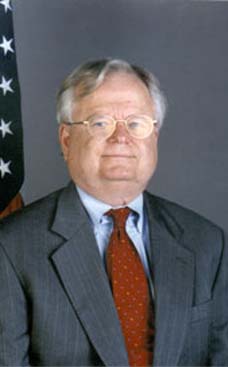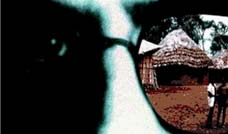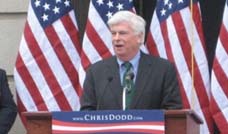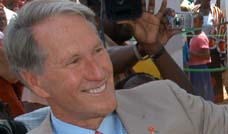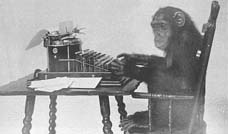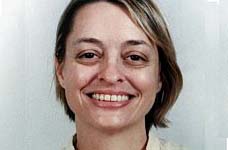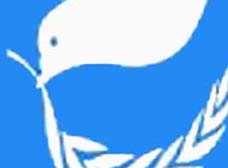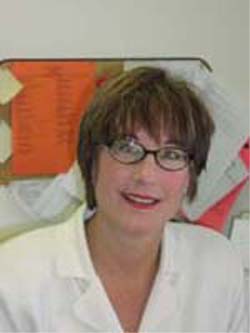
Koutsky landed in the South Pacific kingdom of Tonga with an array of colorful homemade dresses and her usual enthusiasm. She credits the Peace Corps with directing her talent, strengthening her internal resolve. "I learned there's a lot in life that isn't going to turn out the way you think it will, and you have to find solutions for problems you'd never thought you'd confront; and in the end, you will feel good if you solve these problems." She was charged with teaching high-school biology but had no textbooks, no paper, no writing utensils. There was a chalkboard. But no chalk. "So you get to be friends with the other teachers," Koutsky says, "and arrange to use their chalk when they're not using it." Luckily, Koutsky could draw. Cells, granules, organ systems. A natural teacher, she was also a great listener, recalls fellow Peace Corps volunteer Julianne Hickey. Students would go to her for additional help. They could tell if she was home by whether her black bike was parked out front. After the Peace Corps, Koutsky applied to the UW's School of Public Health with an eye toward international health. She was rejected. "They were underwhelmed by my undergraduate transcript. B-minus."
Tonga RPCV Laura Koutsky developed breakthrough vaccine against cervical cancer
From Virus To Vaccine
Professor Laura Koutsky clears a crucial path to preventing cervical cancer
BENJAMIN BENSCHNEIDER / THE SEATTLE TIMES
The back story of the new cervical-cancer vaccine includes, among its many twists: Warts, Italian nuns, a virus old as humanity, a German scientist who shared DNA samples even with those who'd spurned him, numerous naysayers and red herrings, thousands of University of Washington student volunteers, a mended friendship — and a Peace Corps returnee who launched her pivotal career in sexually transmitted diseases (STD) through a chance encounter at the Northgate Mall.
"It didn't seem to be a linear pathway to how I got here," laughs UW epidemiology professor Laura Koutsky. She's credited with developing the world's first human papillomavirus (HPV) vaccine along with Dr. Kathrin Jansen, a yeast expert then at Merck Research Laboratories.
Human papillomaviruses are responsible for virtually all cervical cancers. Cervical cancer strikes 493,000 women every year and kills 274,000 of them, usually in their most productive years. After breast cancer, it is the second most common cancer among women. In poor countries, it is the leading cause of cancer-related death because Pap tests to screen for pre-malignant cells are not routine.
Talk about contagious! Within a year of first intercourse, a young woman has a 30 percent chance of becoming infected with HPV even if she has only one partner. Within three years, 60 percent of women are infected. By the time women are in their 40s, the infection rate is 70 to 80 percent.
Koutsky calls HPV "an equal-opportunity infection," unlike other sexually transmitted diseases that tend to hover around people who have many sexual partners. You can get HPV your first time. You can even get it through genital contact without having intercourse.
Those were the startling results of Koutsky's ground-breaking research that enlisted 900 women volunteers on the UW campus starting in the late-1980s for three years of pelvic exams, shots and detailed questions about their sex lives.
The dogma, back then, was that to learn about any sexually transmitted disease, you had to study high-risk populations at STD clinics. But Koutsky suspected that by the time people sought help at an STD clinic, they'd have already been long infected. It would be too late to figure out how and when they got the virus and how long it would take for the bug to damage cells.
So Koutsky also recruited at UW's Hall Health outpatient clinic and focused on women who'd had fewer than four sexual partners in their lives. Her important early studies, published in the New England Journal of Medicine and the American Journal of Epidemiology, examined the disease's natural history — what causes cervical cancer and HPV, who gets it and when.
Without knowing those basics, it would have been impossible to make a vaccine.
FLASH ON VACCINES, and most people think of scientists tinkering with slides and serums. (That was Jansen's realm.) Koutsky's role, as an epidemiologist, was to design studies that demonstrated the vaccines' safety and effectiveness, an endeavor considered so significant that Koutsky is first author on the scientific papers announcing the vaccine breakthroughs.
Two of Koutsky's key studies, published in 2002 and 2007 in the New England Journal, proved HPV vaccines were effective. "You can have a million vaccines out there," Koutsky says, "but do they work? Can you point to data that say this product is safe, this product is effective, it does what we think it should do in a group of people"?
In a May 10 editorial in the New England Journal, Dr. Christopher Crum writes: If the promise implicit in the study by Koutsky et al. is realized, we could, in our lifetime, see the gradual but progressive dismantling of the barriers to preventing cervical cancer. The captives of our current system — both patients and their caregivers — may be set free.
For most people, the immune system tackles and virtually clears HPV infections in one to three years. But about 15 percent of the time, the virus lingers. This can lead to warts or cancer in men, women and youths. That's why our health system promotes frequent Pap smears and removal of suspicious pre-cancerous lesions. Such intensive monitoring and treatment carries a hefty price tag, never mind the stress.
"The HPV vaccine ranks with the hepatitis B vaccine as the two most important vaccines to be given to prevent cancer," says Dr. King Holmes, chairman of the UW's Department of Global Health and director of the Center for AIDS and STD. "Laura brought the HPV vaccine trials forward in the most efficient manner possible. There were no missteps. As a result, this is a vaccine that got out to women more quickly and with all of the right considerations."
Creating a vaccine and getting it to the public was a monumental task involving hundreds of scientists, thousands of volunteers, layers of logistics on everything from syringe length to inadvertent pregnancy.
Koutsky's team had to figure out how many volunteers to recruit, how many shots to give and when, how long it takes to become infected (or not), when you have enough information to stop. They enrolled 12,167 young women in a randomized, double-blind, placebo-controlled trial at 90 sites in 15 countries and followed them for three years.
In all, it took more than two decades to create Gardasil, the new Merck vaccine that protects against four types of HPV (two cancer viruses and two wart viruses) using Koutsky's 1980s natural-history study as a starting point.
In the world of vaccines, that's fast.
LAURA KOUTSKY was born in Seattle in 1953 and grew up in the Montlake and Laurelhurst neighborhoods, the middle of five children of a surgeon dad and stay-at-home mom.
Her mother, Ruth, says Laura always knew how to make her laugh, and even as a young child would befriend underdogs. Her sister describes Laura as an artistic, happy-go-lucky kid, a cheerleader and athlete who loved swimming, water skiing, doodling and exploring around their Whidbey Island cabin. Even though their father was a doctor, Koutsky says her parents never pressured the kids to go into medicine or the sciences, though they did emphasize a responsibility to give back to society.
"I was not driven at the age of 5 to become an epidemiologist," Koutsky says. "I wasn't even driven at the age of 20!"
In retrospect, however, she recalls vaccinations were a big deal. The family's home movies chronicle childhood birthdays, Christmas morning — and the day they all got the polio vaccine.
At Roosevelt High School, a teacher sparked Koutsky's interest in biology, which became her major at the University of Oregon. One summer, she studied invertebrate zoology at the Oregon Institute of Marine Biology outside Coos Bay. Every day, she wandered the tide flats for hours in hip waders. "It was fascinating. It had to do with patterns and relationships and evolution. Worms. Insects, mammals."
Yet she soon realized careers in marine biology begin by washing a lot of glassware on research vessels. A friend suggested the Peace Corps.
Koutsky landed in the South Pacific kingdom of Tonga with an array of colorful homemade dresses and her usual enthusiasm. She credits the Peace Corps with directing her talent, strengthening her internal resolve.
"I learned there's a lot in life that isn't going to turn out the way you think it will, and you have to find solutions for problems you'd never thought you'd confront; and in the end, you will feel good if you solve these problems."
She was charged with teaching high-school biology but had no textbooks, no paper, no writing utensils. There was a chalkboard. But no chalk. "So you get to be friends with the other teachers," Koutsky says, "and arrange to use their chalk when they're not using it."
Luckily, Koutsky could draw. Cells, granules, organ systems. A natural teacher, she was also a great listener, recalls fellow Peace Corps volunteer Julianne Hickey. Students would go to her for additional help. They could tell if she was home by whether her black bike was parked out front. After the Peace Corps, Koutsky applied to the UW's School of Public Health with an eye toward international health. She was rejected. "They were underwhelmed by my undergraduate transcript. B-minus."
Around that time, while shopping at Northgate, she ran into a former junior-high classmate who was headed to medical school and leaving behind her job as research assistant in the lab of King Holmes, a world expert on sexually transmitted diseases.
"I wouldn't recommend just anybody for my job," Julie Adam says. "But I had always believed in Laura. She's very intelligent, she has ethics, a big heart. She was able to bridge many groups of people. And she's a hard worker."
Over the next year, while gathering data about chlamydia in pregnancy, Koutsky fell in love with epidemiological research. "The idea of being able to ask questions about what was causing a disease!" She was immersed in patterns and relationships, just like during her beloved summer on the tide flats, only this time in a landscape of diseases and populations. It was like being a detective investigating the links between humans, environment, behaviors, organisms and disease.
Koutsky also realized she loved the dynamics of working with scientists who hypothesized, challenged each other's ideas and contributed different bits to solve a problem: Collaboration. The UW School of Public Health accepted her the following year, and she eventually pursued a doctorate in epidemiology, all the while continuing to work in Holmes' lab.
"She came in here with her eyes wide open ready to take on anything," Holmes recalls. "My initial impression was that she was incredibly enthusiastic and at the same time very level-headed. It became apparent as we worked on many different projects that everything she put her hand to came out successfully."
Come time for her dissertation project, Koutsky proposed studying the link between sexually transmitted diseases and spontaneous miscarriages. Holmes thought the project would be problematic and costly.
Besides, HPV was rising on the horizon as the next big sexually transmitted disease. He wanted Koutsky to tackle it. "She'd worked on 14 different STDs and was unique in having so much experience . . . Of all the young people we had coming along, she was the best prepared to handle it."
HUMAN PAPILLOMAVIRUSES evolved with humans a million years ago. Ancient Greeks and Romans described genital warts thousands of years ago. But for most of human history, no one understood how sex, HPV and cancer were linked.
People had long suspected a relationship between cervical cancer and sex. In 1842, Italian physician D. Rigoni-Stern reported that nuns had virtually no cases of the disease; cervical cancer was rare among married women; the rate among prostitutes was unusually high. By the 1900s, it became clear. Women with more sex partners were more likely to get cervical cancer.
By the 1960s, researchers surmised that one or more sexually transmitted diseases caused cervical cancer — perhaps herpes or chlamydia, they thought. Then, in the 1970s, Harald zur Hausen, a German cancer researcher training at the University of Pennsylvania, bucked conventional wisdom, demonstrating that HPV was a family of viruses that caused everything from common warts to malicious cancers of the cervix, and more rarely, of the anus, penis, mouth and neck. Until then, nobody realized certain viruses could cause cancer.
Zur Hausen freely shared with labs worldwide the viral-DNA fragments he'd painstakingly isolated, an act credited with speeding up vaccine research. (And unlikely to happen now, Koutsky says, in an age when everyone wants to patent everything.)
Your skin, right now, is probably covered in human papillomavirus; there are more than 200 types. Two, HPV-16 and HPV-18, cause 70 percent of all cervical cancers.
Koutsky's natural-history studies proved a strong temporal relationship between cervical cancer and those two. Soon after becoming infected with those virus types, women developed abnormal cells; sometimes these progressed to lesions, including the sort that typically turn into cancer. (In the study, lesions were removed before becoming cancerous.)
The fact that it took only months to go from infection to bad Pap — instead of 10 to 20 years as previously thought — meant it would be realistic to test a vaccine.
"No one believed it," says Dr. Nancy Kiviat, who collaborated with Koutsky on the natural-history study and now directs pathology/cytopathology at Harborview Medical Center. It was Kiviat who developed the assays to test whether women in Koutsky's early study had HPV and which type. Not an easy task.
"Now, everybody gets the same answer and tests are more standardized," says Denise Galloway, a microbiologist and collaborator on the natural-history study. "In the late '80s, early '90s, everybody was using different techniques, and the results were a mess. HPV was everywhere or was nowhere."
To double-check lab results, dual samples from each woman were sent to different labs. The results should've matched. Not even close. Kiviat worried her lab was wrong. Koutsky pored over the data and recognized consistent patterns in Kiviat's results. These are right, she reassured her colleague.
Koutsky credits Kiviat with teaching her the power of collaboration. Early in their careers, the two were icy competitors, each recalls. After about a year, Kiviat approached Koutsky:
You know, as a pathologist, I'm going to develop lab expertise and clinical expertise and you'll have the epidemiologic, analytic, biostatistical expertise. If we work together, we could have the world!
The rivalry melted. They became lifelong friends and collaborators, Kiviat's lab central to the success of Koutsky's studies.
Around the same time, DNA technology was moving forward. Until then, the problem with HPV was that you couldn't grow it in a lab, ruling out a vaccine based on live or attenuated HPV virus. New molecular technology made it (theoretically) possible to snip fragments of viral DNA and insert them into a vehicle that could infect the cell systems of insects or yeast. That would produce a capsid protein, or viral shell, that could stimulate an immune response without transmitting disease.
Enter Kathrin Jansen, a scientist at Merck with expertise in yeast. She was a newcomer to the HPV field when she met Koutsky at a conference.
Jansen believed she could use yeast to make an HPV vaccine; Merck had already made a hepatitis B vaccine using a similar concept. She needed Koutsky's HPV expertise to design a vaccine trial. Jansen: "If you design a study wrong, involve too few people, you can have a trial that will not reach statistical significance."
Koutsky's team enrolled 2,392 young women in a double-blind trial to test the HPV-16 vaccine Jansen had created (an arduous years-of-late-nights-in-lab process using a dozen different yeast strains).
The volunteers received three doses of either placebo or vaccine and underwent Pap tests about every six months. Koutsky's team figured that by the time 31 women had persistent HPV-16 infection they'd know whether the vaccine had any impact. After 17 months, the 31st woman tested positive for persistent HPV-16. The study was unblinded to a biostatistician. All of the persistent HPV-16 infections were in women who'd received the placebo. None of the vaccinated women had the virus.
"We were clapping and jumping through the hallways" at Merck, Jansen recalls. Immediately, they phoned Koutsky with the good news. Was it by chance that a vaccine for women was developed by women? Coincidence, Jansen says. "But then, it was a lot of fun to have it go that way."
Next decision: Which strains of HPV to include in the vaccine that would go to the public? Everyone agreed two of the four spots should go to HPV-16 and HPV-18, the virus types causing most cervical cancer. Koutsky wanted to fill the other two slots with two more cancer types. Jansen argued for a couple of genital wart virus types to make the vaccine appealing to men.
Because men don't have cervixes, they can't get cervical cancer. But like mosquitoes that transmit malaria to humans, men carry and transmit HPV to women. (Men who have sex with men are also at risk for anal cancer.) If both men and women were vaccinated, HPV rates might decrease faster in the general population, an effect known as herd immunity.
"Look, Laura," Jansen said. "So what makes it palatable for a young man to get immunized if he doesn't get a benefit for himself? You count on the goodwill of that person? You know, I imagine it must be quite devastating to have one of those big, ugly things growing on his penis, right? Certainly not very attractive, and the treatment is not particularly pleasant . . ."
Koutsky was convinced.
Licensed last summer, the Merck vaccine protects against two cancer viruses and two genital wart viruses. It's targeted at girls around age 12, before they become sexually active. That makes it controversial among parents who worry the vaccine could encourage sexual relationships.
Parents have to look at facts, the epidemiologist says: 40 percent of 16-year-old girls are sexually active; 70 percent of 18-year-old girls are. Washington state fully covers the vaccine for girls 18 and younger. At $360 for the three-dose series, that's a significant savings.
Now that Koutsky's developed the vaccine, she's on to the next challenge: Getting it to the public. "It would be a travesty if we have this highly safe and effective vaccine and it doesn't get used."
Paula Bock is a Pacific Northwest magazine staff writer. Email: pbock@seattletimes.com. Benjamin Benschneider is a magazine staff photographer.
